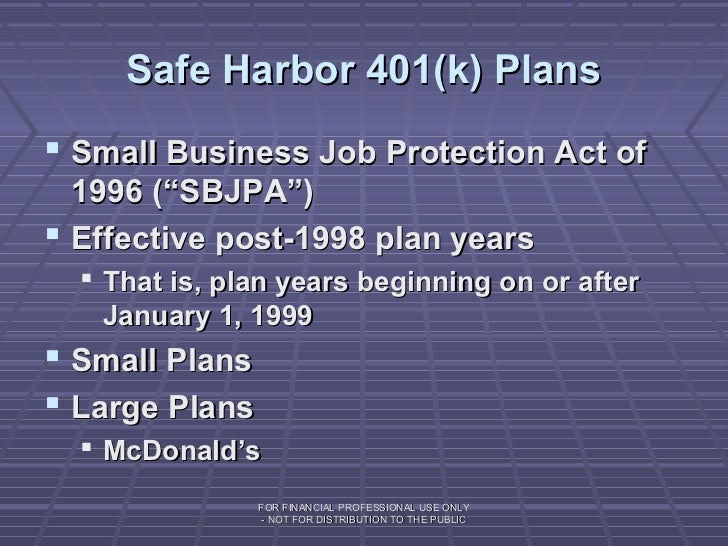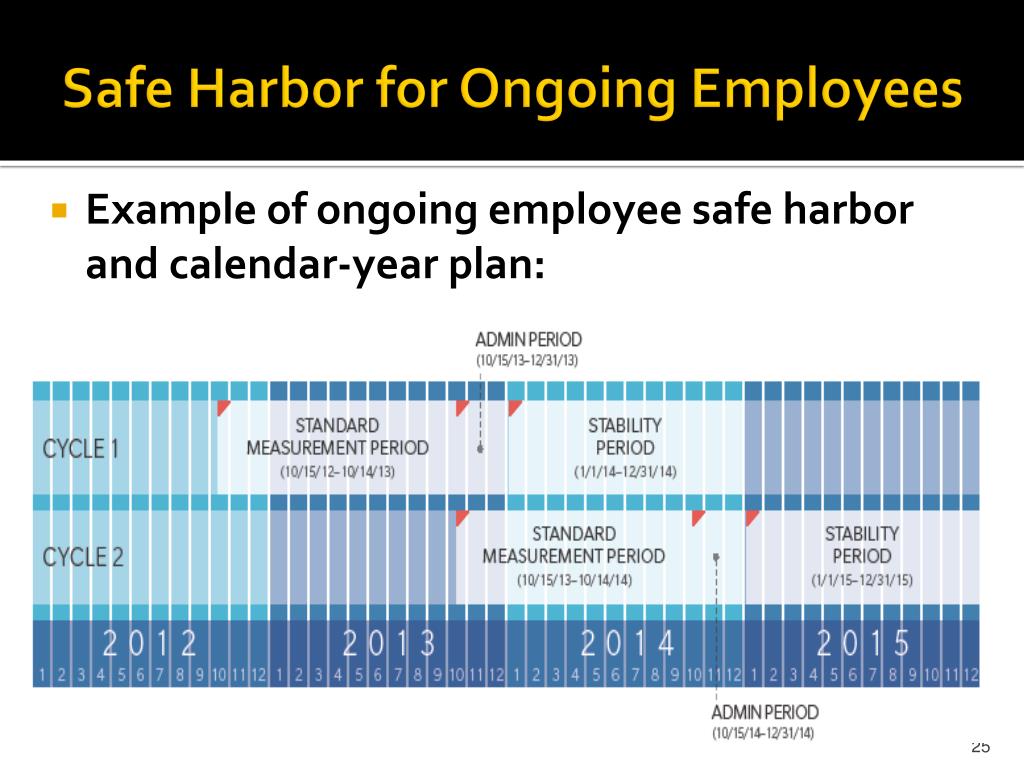
Dc plan safe harbor professional#
Employers may need unbiased professional advice in the process of selecting and monitoring PEP providers and other fiduciaries. In this situation, where the PEP outsources these tasks, the employer has fiduciary responsibility to review this selection in its evaluation of the PEP. In addition, the SECURE Act allows plan investment fiduciary duties to be provided by an entity other than the PEP provider. The analysis of the PEP’s services and fees will remain a fiduciary responsibility of the participating employer. Because PEPs pool resources from many individuals working for different employers, they offer the potential for greater efficiency and lower investment and administrative costs than a single, small employer would be able to achieve on its own.Ĭhallenges that will be faced by employers participating in PEPs include the initial PEP selection and the ongoing responsibility for determining whether the PEP that has been selected remains an appropriate choice. 3 Many of these employers may not have offered a retirement plan due to the associated administrative cost and compliance burden. According to the Department of Labor (DOL), in 2019, only 54% of workers at businesses with fewer than 100 employees (compared to 67% of all workers) had access to a workplace retirement plan.

PEPs have the potential to significantly expand retirement plan coverage among U.S. 2 Further, any plan compliance failures by one participating employer would not jeopardize the plan’s qualified status for other participating employers. The primary fiduciary and administrative (compliance) responsibilities for the plans would be borne by the pooled plan provider offering the plan, rather than the individual participating employers. As a result, PEPs have also been referred to as “open multiple employer plans.” PEPs will be 401(k) plans, not 403(b) or 457 plans.

This new type of retirement plan is a defined contribution plan that would allow multiple, unrelated employers to participate in the same plan without having the “common nexus” that has historically been required for multiple employer plans. The SECURE Act enables the formation of PEPs, effective for plan years beginning after 2020. 1 The discussion focuses on observations of the impacts of the SECURE provisions and suggestions for how any future regulatory guidance could be constructed to ensure that plan sponsors and participants have the information they need to move forward and realize the goals of the SECURE Act. This issue brief focuses on three provisions that impact employer-sponsored retirement plans in the SECURE Act: 1) open PEPs, 2) provision for savings plan annual statements that estimate what workers’ savings are worth in the form of lifetime income, and 3) the safe harbor provisions for employers that add lifetime income annuities to their defined contribution plans. The impact of certain provisions, such as pooled employer plans (PEPs) and defined contribution (DC) lifetime income options, will depend on whether employers/plan sponsors find these provisions attractive enough to implement and how the markets react with solution development. The requirement for plan sponsors to expand coverage to certain part-time employees will be beneficial to millions of Americans previously unable to save in employer plans.Īnother mandatory provision requires illustrations of how much retirement income their account balances could provide, helping participants understand how much additional savings they may need in order to achieve their desired retirement security.

Some of these provisions are requirements that will have an immediate impact, where others will depend on whether employers implement them.

The SECURE Act contains a wide range of provisions for individuals, plan sponsors and business owners. The Setting Every Community Up for Retirement Enhancement (SECURE) Act enacted on December 20, 2019, sets the stage for the possible improvement of retirement outcomes for millions of Americans. Impact of the SECURE Act on Retirement Security


 0 kommentar(er)
0 kommentar(er)
